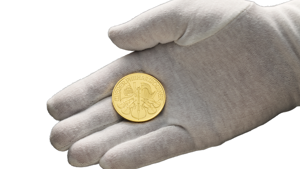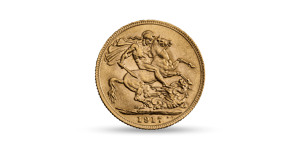Tavex uses cookies to ensure website functionality and improve your user experience. Collecting data from cookies helps us provide the best experience for you, keeps your account secure and allows us to personalise advert content. You can find out more in our cookie policy.
Please select what cookies you allow us to use
Cookies are small files of letters and digits downloaded and saved on your computer or another device (for instance, a mobile phone, a tablet) and saved in your browser while you visit a website. They can be used to track the pages you visit on the website, save the information you enter or remember your preferences such as language settings as long as you’re browsing the website.
| Cookie name | Cookie description | Cookie duration |
|---|---|---|
| tavex_cookie_consent | Stores cookie consent options selected | 60 weeks |
| tavex_customer | Tavex customer ID | 30 days |
| wp-wpml_current_language | Stores selected language | 1 day |
| AWSALB | AWS ALB sticky session cookie | 6 days |
| AWSALBCORS | AWS ALB sticky session cookie | 6 days |
| NO_CACHE | Used to disable page caching | 1 day |
| PHPSESSID | Identifier for PHP session | Session |
| latest_news | Helps to keep notifications relevant by storing the latest news shown | 29 days |
| latest_news_flash | Helps to keep notifications relevant by storing the latest news shown | 29 days |
| tavex_recently_viewed_products | List of recently viewed products | 1 day |
| tavex_compare_amount | Number of items in product comparison view | 1 day |
| Cookie name | Cookie description | Cookie duration |
|---|---|---|
| chart-widget-tab-*-*-* | Remembers last chart options (i.e currency, time period, etc) | 29 days |
| archive_layout | Stores selected product layout on category pages | 1 day |
| Cookie name | Cookie description | Cookie duration |
|---|---|---|
| cartstack.com-* | Used for tracking abandoned shopping carts | 1 year |
| _omappvp | Used by OptinMonster for determining new vs. returning visitors. Expires in 11 years | 11 years |
| _omappvs | Used by OptinMonster for determining when a new visitor becomes a returning visitor | Session |
| om* | Used by OptinMonster to track interactions with campaigns | Persistent |
| Cookie name | Cookie description | Cookie duration |
|---|---|---|
| _ga | Used to distinguish users | 2 years |
| _gid | Used to distinguish users | 24 hours |
| _ga_* | Used to persist session state | 2 years |
| _gac_* | Contains campaign related information | 90 days |
| _gat_gtag_* | Used to throttle request rate | 1 minute |
| _fbc | Facebook advertisement cookie | 2 years |
| _fbp | Facebook cookie for distinguishing unique users | 2 years |
What Makes a Bullion Coin Rare?

It is believed that more than 30 billion coins are currently in circulation in the United Kingdom. The Royal Mint has been producing coins since AD 886, and as a result, people across the country own coins that are no longer in circulation. Some of these coins may be rare and valuable.
In the intriguing world of precious metals, bullion coins hold a unique position. These coins, often minted in gold, silver, platinum, and palladium, are sought after by investors and collectors alike.
But what makes some of these coins increase in value over time, especially when considering their rarity? This article delves into how the rarity of a bullion coin can significantly alter its value, providing insight for collectors and investors.
Understanding Bullion Coins
Bullion coins are not just any coins; they are a tangible investment in precious metals. Unlike currency coins, bullion coins are valued primarily for their metal content and are a popular way to invest in gold, silver, and other precious metals.
 In Stock
In Stock
These coins come in various types, from widely recognised ones like the Canadian Maple Leaf, and South African Krugerrand, to more limited editions that appeal to serious collectors.
Determining Bullion Coin Value
Several factors come into play when determining the value of bullion coins. The market demand, the current price of the metal, and broader economic conditions can all influence a coin’s worth.
However, beyond these factors, the rarity of a coin can significantly impact its value, often making it more desirable to collectors and investors.
What Defines a Coins Rarity
Rarity refers to the scarcity of a coin within the context of its total possible circulation
A coin can be considered rare for several reasons, such as limited minting, historical significance, or being part of a special edition.
The rarer the coin, the more valuable it tends to be, as collectors are willing to pay a premium for items that few others possess.
Key Factors Influencing Rarity
Limited Mintages

Low mintage figures often indicate rarity, but the true test of rarity is how many pieces have survived in good condition. A coin issued in large numbers can become rare if few examples have survived.
For example, a coin minted to commemorate a specific event in limited numbers might become highly sought after by collectors. For example, the 1841 Queen Victoria Sovereign is sold at a high premium due to increased demand and high rarity.
Preservation and Condition

For rare coins, condition is paramount. A coin in pristine condition is typically more valuable than one that has been worn down or damaged. Proper preservation techniques can help maintain a coin’s condition and, by extension, its value.
External Trends
Predicting the future trends in bullion coins involves understanding market dynamics, collector interests, and economic factors. For example, The Royal Mint bullion coins minted in the UK in 2023 with the Queens Effigy on are now considered to be a rare collectible item as they are the last year minted with her face on.

Another example of rare British coins includes the coinage of Edward VII. Edward VIII abdicated after just a few months on the throne. As a result, no coins depicting his effigy were ever issued for circulation, but a small number of trial and pattern pieces of the new monarch’s coinage were created. These coins thus gained the title of being an extremely valuable coin and one of the rarest coins in circulation. The Royal Mint set a new UK coin record by acquiring and selling an Edward VIII Sovereign for £1 million.
Global Events
World Wars and global events often spark rarity in coins. The circulation of gold coins suffered as a result of World War I. Before the war, having gold in your change was considered a luxury, but during the war, it was deemed impractical due to the necessity for finances to support the war effort.

As a result, 1917 George V Sovereigns were no longer minted for circulation, and production at London’s Royal Mint ceased in 1917. Many of the Sovereigns struck that year were transferred to the United States of America to repay war debts.
Considerations When Purchasing Rare Bullion
Acquiring and selling rare bullion coins requires knowledge and strategy. Buyers should focus on authenticity, rarity, and condition, while sellers need to understand the market demand and proper valuation techniques to maximise their returns. Considering market pricing is thus very important.
 In Stock
In Stock
Investing in rare bullion coins carries both potential returns and risks. The value of these coins can fluctuate based on a variety of factors, making it essential for investors to conduct thorough research and consider their long-term investment strategy to gain a high price back on your investment.
The demand for rare bullion coins isn’t limited by geography
International collectors and investors can drive up the value of rare coins, influenced by global events, trends in collecting, and changes in the precious metals market.
The perspectives of collectors and investors can differ significantly when it comes to rarity. Collectors might value the historical significance or the uniqueness of a coin, while investors may see rare coins as a means to diversify their portfolios and potentially earn a return on their investment over time. Additionally, when selling your rare bullion on make sure to consider that some bullion dealers will value your gold based on intrinsic value rather than rarity.
Conclusion
The rarity of a bullion coin plays a crucial role in determining its value.The rarity of a coin encompasses more than its mintage figures; it’s a combination of historical significance, condition, and the market’s demand.
For collectors and investors alike, understanding the nuances of rarity can lead to more informed decisions and potentially lucrative investments. As the market for precious metals continues to evolve, the allure of rare bullion coins remains a fascinating aspect of this complex and rewarding field.
FAQs
1) Why are some bullion products made with limited mintages?
Limited mintage coins often carry historical significance. They are often issued to commemorate specific events, historical events, anniversaries, or historical figures. Learn more about limited mintage bullion products here.
2) How do I find out the value of my sovereigns?
Determining the worth of your sovereign coins involves various factors, from their face value to their design and mint marks. Learn more about how to find out the value of your sovereign here.

















